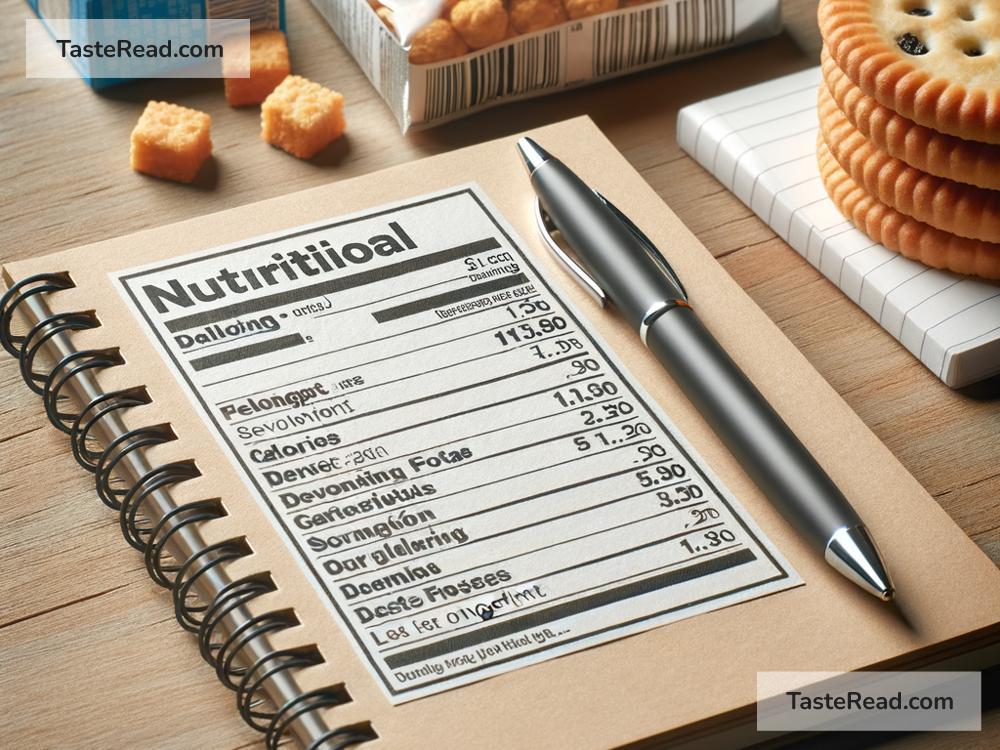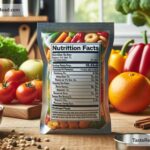How to Read Nutrition Labels Effectively: A Beginner’s Guide
If you’ve ever stood in a grocery store wondering whether the food you’re holding is good for you, you’re not alone. Nutrition labels can seem confusing at first, but they actually hold important information about what you’re eating. Once you know how to read them effectively, you’ll feel more confident about making healthier choices in your daily life.
In this blog, we’ll break down nutrition labels step by step so you can learn how to use them to your advantage—without the stress!
What is a Nutrition Label?
A nutrition label is a small chart printed on packaged food that shows you the nutritional content of what’s inside. It includes details like calories, fat, carbohydrates, protein, vitamins, and other nutrients. In many countries, food manufacturers are required by law to include this information to help consumers make informed choices.
But nutrition labels contain more than numbers—they tell you a lot about the serving size, ingredients, and whether the food is high in sugar, salt, or other substances you might want to monitor.
Step 1: Start with the Serving Size
The first line on a nutrition label is usually the serving size. This is the amount of food the label’s numbers are based on. For example, the serving size might be one cup of cereal or six crackers.
Here’s why this is important: the serving size tells you exactly what portion is being measured. If you eat more than the serving size listed, all the numbers on the label (calories, fat, sugar, etc.) will increase to match the amount you’ve eaten.
For instance, if a nutrition label says there are 100 calories per serving but you eat two servings, you’ve actually eaten 200 calories.
Step 2: Check the Calories
The next line on the label shows the calories per serving. Calories measure the energy your body gets from the food. Knowing the calories can help if you’re trying to manage your weight or track your daily energy intake.
While calories are important, they don’t tell the whole story. For example, 200 calories of fruit are far healthier than 200 calories of sugary snacks. That’s why it’s important to look beyond the calories and check the nutritional content too.
Step 3: Look at the Nutrients
Nutrition labels break down the key nutrients in the food. Here are the most common ones and what they mean for your health:
1. Fats
- Total Fat: Includes all types of fat in the food.
- Saturated Fat: Too much saturated fat can raise cholesterol and increase your risk of heart problems. Aim to limit foods high in saturated fats.
- Trans Fat: Considered unhealthy. Try to avoid foods with trans fats whenever possible.
2. Cholesterol and Sodium (Salt)
- Cholesterol: High cholesterol can affect your heart health. Foods with lower cholesterol levels are generally better for you.
- Sodium: Sodium is another name for salt. Consuming too much salt can lead to high blood pressure. Nutrition labels show you the amount of sodium so you can monitor your intake.
3. Carbohydrates
- Total Carbohydrates: Includes sugar, fiber, and starch. Carbs are your primary source of energy, but they can vary greatly in quality.
- Fiber: An essential part of your diet that helps digestion. Look for foods high in fiber.
- Sugar: Keep an eye on added sugars (extra sugar that companies have added during manufacturing). Too much sugar can lead to weight gain and health problems.
4. Protein
Protein is important for building and repairing your body. It also helps you feel full for longer. Look for foods that provide a good amount of protein.
Step 4: Understand the Percent Daily Value (%DV)
At the far right of most nutrition labels, you’ll see something called % Daily Value (DV). This percentage tells you how much of each nutrient a serving of the food contributes to the average daily diet.
For example:
– If a food provides 10% DV for fiber, it means one serving contains 10% of the fiber you should eat in a day.
A general rule:
– 5% DV or less = low in the nutrient.
– 20% DV or more = high in the nutrient.
Use %DV to decide what’s worth eating. For example, you might want foods high in protein (more than 20% DV) but low in saturated fat and sodium (less than 5% DV).
Step 5: Scan the Ingredients List
The ingredients list is usually found below the nutrition label. It tells you what’s inside the food, in order of quantity. The first few ingredients listed make up the largest portion of the food.
Tips for reading ingredients:
– Keep an eye out for added sugars (words like “corn syrup,” “fructose,” or “sucrose”).
– Look for whole ingredients like “whole-grain oats” or “real fruits.”
– Avoid overly processed foods with long lists of chemicals or artificial ingredients.
Final Thoughts
Learning how to read nutrition labels effectively can feel overwhelming at first, but it becomes easier with practice. Start by focusing on the serving size, calories, and the nutrients that matter most to your health. Understanding these labels empowers you to make better choices for you and your family.
So the next time you’re at the grocery store, take a moment to check the label. It’s your shortcut to smarter, healthier eating!


